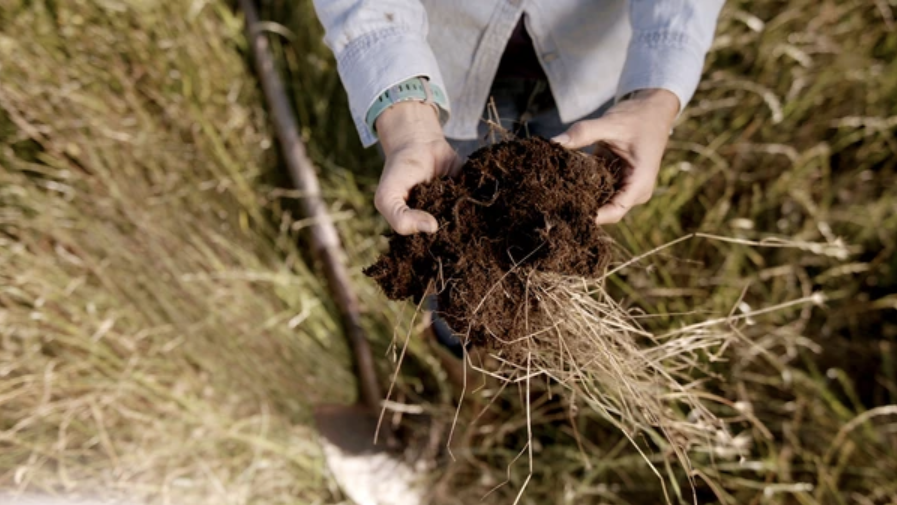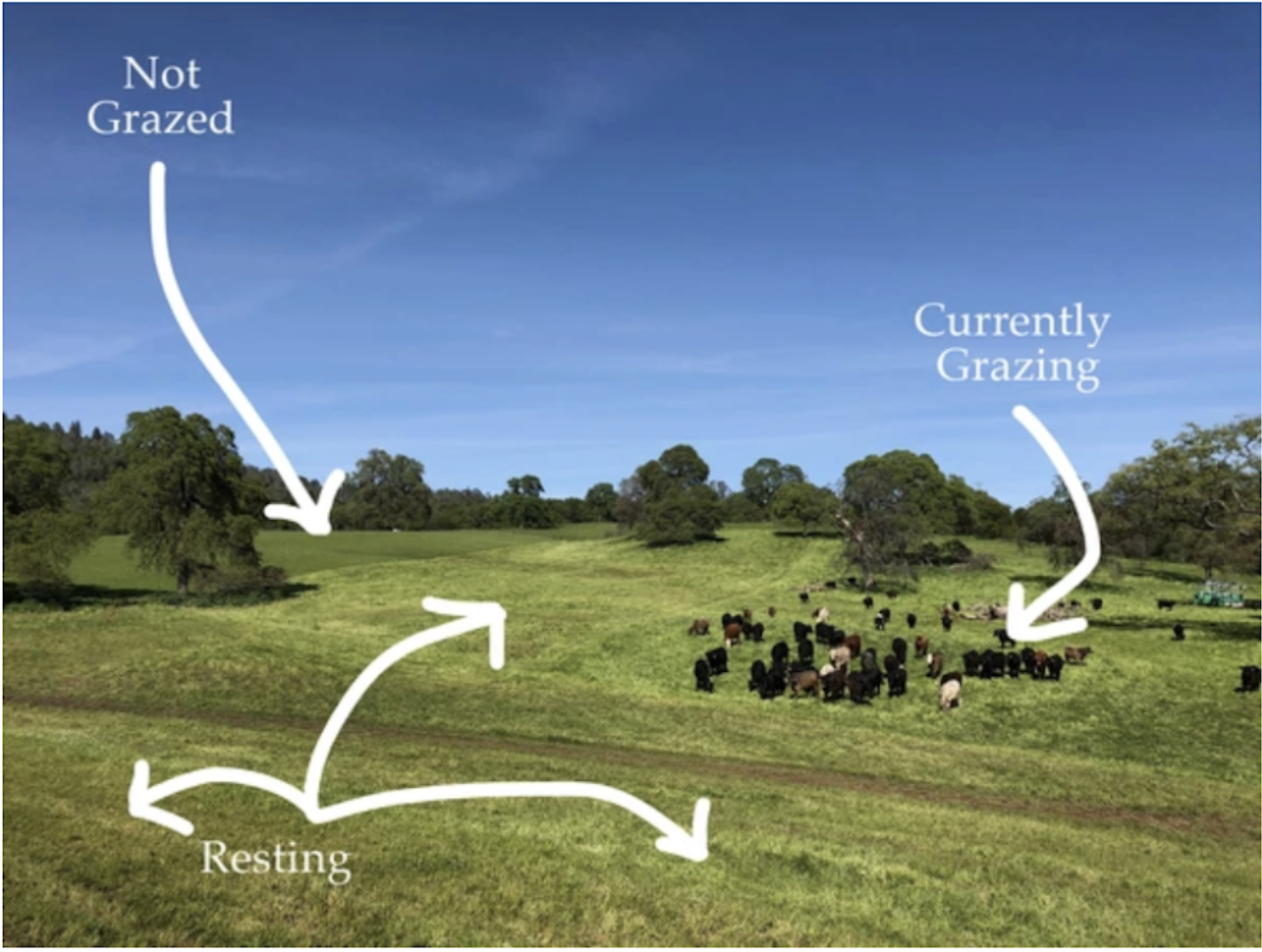What is it and why is it important?

There are lots of labels and certifications out there — everything from Certified Organic to Certified Humane and even certified Predator Friendly. Certifications help create a standard among farms — something tangible to work toward and something tangible consumers can use to help them make better decisions for themselves when it comes to the products they’re buying.
When it comes to the health of the land, one certification — the Ecological Outcome Verified (EOV) program — stands out as leader in the field. This program helps customers verify what food is raised regeneratively through soil and landscape assessment that tracks positive outcomes in biodiversity, soil health and ecosystem function.
But what does that even mean? We talked to Carrie Richards of Richards Grassfed Beef (an EOV farm!) to find out more.
What is regenerative farming in your own words?
Carrie: Put simply, regenerative agriculture is working with nature — not against it. It helps improve the land and it keep flourishing for years to come.
In a more technical sense, it’s an approach to food and farming that’s focused around conservation and rehabilitation. It looks at the big picture of agriculture and all the factors that play into it, which can include topsoil regeneration, biodiversity, ecosystem water cycle, climate change and more.
How do farms get this certification?
Carrie: We received our EOV through the Savory Institute. Their amazing company helps train ranchers and farmers about holistic management, which includes financial management and how to manage the land using their data collection points called transects. We have worked with them for almost two years establishing our transects on our ranches so we can be tracking our ecological outcomes every year.
For our home ranch in Oregon House, CA we have been measuring bulk density of our soils, water infiltration, plant diversity, and wildlife habitat in many pastures in our property — even before we were EOV certified. Once we took part in the EOV program, we measured even more pastures and are managing that data so we can re-sample next year and see where we are improving, or not improving. If something is not thriving, this is important because regenerative is working with the land, so if we see something responding badly on our properties, we will change practices in that area to improve it.
Is the Savory Institutes’ EOV program the gold standard when it comes to regenerative agriculture?
Carrie: In our opinion, yes. The Savory EOV team is constantly fine-tuning their way of measuring data to make it more efficient and robust every year. It is incredibly detailed and gives us lots of wonderful information about our land, which then can help us make management decisions.
Not only are they helping us measure out outcomes so we can se how we can improve our practices, but they help with mentorship and financial management. Some certifications come in, do an audit every year, and that is it. The Savory folks are always there when we need them and are constantly helping us run our business successfully.
What testing is involved?
Carrie: The Savory folks measure Bulk density, water infiltration, organic mater, plant diversity, wildlife presence, total organic carbon at 1 to 10 cm and at 10 to 40 cm and, of course, annual and perennial identification, to name a few!
What are some specific ways farms practice regenerative agriculture?
Carrie: Rest, rest, rest! Our land in certain areas has been traditionally overgrazed and not given sufficient rest. So this is a huge focus for us. Once a pasture is “retired” for a season, we do everything we can to not use those pastures until spring. We are also working with nature, meaning when the grass is growing quick, we move the animals quick, and when it is growing slow, we move slower — this will help the grasses become more robust by giving them ample rest time before we come back again. Another way is to take half and leave half. We always want our ground covered, never grazed to the ground. This keeps the soil cool and the grasses growing longer. And the most important part is that we are paying attention to the animals' health. If the soil is unhealthy, the grass is unhealthy, and the animals are not getting what they need. If we take care of the soil then most of the time everything above ground falls into place.

Why is regenerative farming important?
Carrie: Regenerative farming is important because it focuses a holistic management, which leads to better outcomes in every aspect of your farm. Plus, you can’t manage what you don’t measure, so it’s important to have the data to effectively improve and track the progress of your farm.
Everything is connected, and healthier soil means healthy grass, healthy grass means better cattle performance, better cattle performance means a better product for the consumer! Taking care of the soil, not over grazing, knowing how long to rest your pastures, working with nature and knowing what your property can handle is a huge part of how we manage and an important aspect to regenerative farming. At our home ranch, after implementing holistic management, we are seeing perennial plants return to pastures, the density of grasses increasing, and grasses staying greener longer in our creek/riparian areas.
Healthier lands also mean healthier cows — which means we are having to doctor fewer cattle every year. We’ve also decreased our hay consumption by 15 loads! That is 360 tons of feed, not to mention the fuel saved by not hauling it to the ranch, and the $60k bill that comes with it!
Why choose regenerative agriculture over conventional? Why should consumers choose products from EOV certified farms?
Carrie: EOV farms and ranches are dedicated to sequestering more carbon, maintaining healthy soils and delivering the most delicious and nutrient dense products out there. When you see the EOV stamp on a product you're buying, you can be assured that the ranch or farm that product came from is working with nature and doing their best to give back to the land instead of just taking.
Healthy soils absorb more carbon (meaning less CO2 in the air!), retain more water, and are more fertile. Plant diversity and resiliency increases, and domestic animals and wildlife are more plentiful.
In the pastures we’ve measured on our property, we’ve seen a 10% increase in carbon in our soil! Buying from Richards Grassfed and any other EOV ranch means we can continue to steward the land in a way that will keep it healthy for generations to come!
Crowd Cow is proud to work with farms that practice the very best regenerative agriculture in the industry, including Richards Grassfed Beef, Ayrshire Farm and White Oak Pastures. Your purchase ensures that their efforts don't go unnoticed — efforts that are better for the land, better for the animals they're raising, and better for the environment!